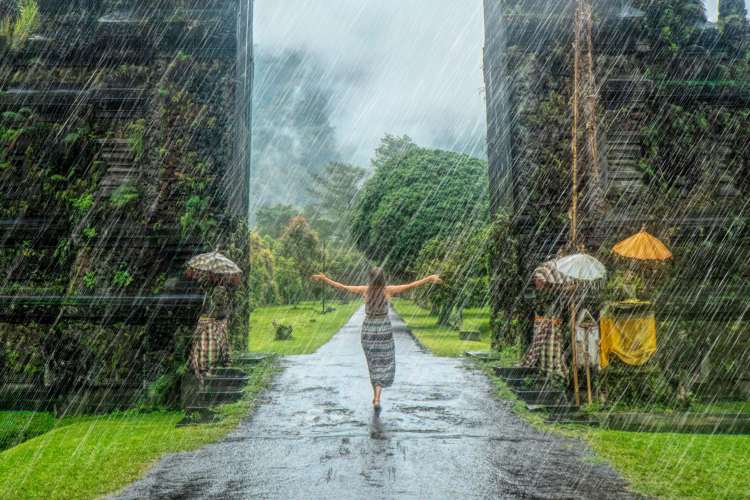
In the geometry of climate science, few cycles are as perilous—and as poorly understood by the public—as the feedback loop between global warming and the accelerating water cycle. This loop is not merely a scientific abstraction; it is a systemic disruption with far-reaching consequences for ecosystems, economies, and human security. What was once a stable and largely predictable process of evaporation, precipitation, and runoff has now morphed into an erratic and destructive engine of climatic extremes. The intensification of the hydrological cycle is both a symptom and a driver of climate change—and its impacts are escalating at a speed that outpaces institutional readiness and political will.
At the centre of this destabilisation is a well-documented thermodynamic reality: for every 1°C rise in global temperature, the atmosphere gains the capacity to hold approximately 7% more water vapor. This added moisture does not distribute evenly across regions or seasons. Rather, it produces paradoxical outcomes—simultaneous droughts and deluges, prolonged dry spells punctuated by catastrophic floods. As climate scientist Professor Jonathan Overpeck of the University of Michigan observes, global warming is “turning the atmosphere into a bigger sponge.” When it rains, it pours. When it doesn’t, the land bakes and the rivers run dry.
READ I Pope Francis: The radical reformer who reimagined moral power
Oceans as absorbers and amplifiers
Oceans, too, are central to this story—absorbing more than 90% of the excess heat generated by greenhouse gas emissions since the 1950s. The consequence is twofold: thermal expansion that contributes to sea level rise, and warmer waters that fuel stronger cyclones and hurricanes. The link between warming seas and intensified storms is no longer conjectural. In 2023, Storm Daniel inundated eastern Libya, breaching dams and decimating the city of Derna. Climate models later confirmed that such extreme weather events are made far more likely by anthropogenic warming.
The melting of glaciers and polar ice sheets adds further complexity. Unlike sea ice, which has minimal impact on sea level, the retreat of terrestrial ice directly increases ocean volume. Together with thermal expansion, these phenomena have already raised global sea levels by 10 to 20 centimetres since the early 20th century. Projections from the Intergovernmental Panel on Climate Change (IPCC) suggest a possible rise of up to 1.1 meters by 2100 under high-emission scenarios—a dire prospect for coastal cities from Mumbai to Miami.
Snowpack, soil and water cycle
On land, the water cycle is unravelling in other, equally disruptive ways. Snowpack—a natural reservoir that sustains rivers and groundwater—is diminishing. Warmer winters reduce snowfall and hasten snowmelt, depriving many regions of their primary water source during the dry months. Additionally, higher temperatures increase evapotranspiration, the process by which plants release water into the atmosphere. This dual loss—from both the snowpack and soil moisture—exacerbates water scarcity and undermines food security.
This interplay is particularly evident in India’s southern Western Ghats and adjoining coastal plains. A recent study led by Jobin Thomas, published in the Journal of Environmental Management, projects that for every 1°C of warming, annual rainfall in the region could increase by up to 20%, with extreme precipitation events rising by 16%. The risks are multifaceted: landslides during the monsoon, drought in the pre-monsoon season, and increased strain on agriculture and hydropower. Under a high-emissions scenario, the region could see an additional 200–670 mm of rainfall annually by century’s end, coupled with a rise in maximum and minimum temperatures of up to 3.6°C.
The feedback loop tightens
These changes are not isolated disruptions—they are reinforcing. More evaporation feeds more intense storms, while diminished snowpack and soil moisture increase vulnerability to drought. Melting Arctic ice, by exposing darker ocean surfaces, reduces albedo and accelerates warming, further amplifying evaporation and atmospheric moisture. The accelerating hydrological cycle, in short, is becoming a self-perpetuating system—a destabilising force that worsens the very conditions that created it.
Cloud dynamics add yet another layer of uncertainty. While current cloud cover provides a net cooling effect, shifts in cloud type and distribution due to warming could alter this balance. Some clouds trap heat, others reflect it. A change in their composition could influence the trajectory of global warming itself, though much of this remains under active scientific investigation.
Imperatives for policy and adaptation
Responding to this crisis demands far more than rhetorical ambition. Reducing greenhouse gas emissions is the foremost imperative. This includes a phased withdrawal from fossil fuels, scaling up renewable energy, and adopting carbon pricing to internalize the cost of emissions. Mitigation efforts must be complemented by adaptation strategies—region-specific investments in infrastructure, sustainable agriculture, and water conservation.
In vulnerable regions such as the Western Ghats, integrated watershed management, enhanced short-term water storage, and upgraded forecasting systems are essential. Infrastructure must be reengineered to withstand both deluge and drought. This includes retrofitting dams, modernising drainage networks, and ensuring that critical urban systems are climate-resilient.
Strengthening institutional capacities for disaster preparedness, insurance coverage, and early warning mechanisms can significantly reduce human and economic losses. Equally important is investing in scientific research to refine climate models and improve understanding of water-climate interactions, especially at local and regional levels.
The acceleration of the water cycle is not a gentle shift—it is a tipping point that threatens to plunge the world into an era of permanent hydrological disorder. The choice is not between action and inaction, but between structured intervention and uncontrolled collapse. The feedback loop between global warming and the water cycle is tightening, but it is not yet beyond our capacity to alter.
Nature has issued its warning in torrents and droughts. The question is whether decision-makers are prepared to listen—and act—before the sponge of the atmosphere squeezes out the last drops of stability.
